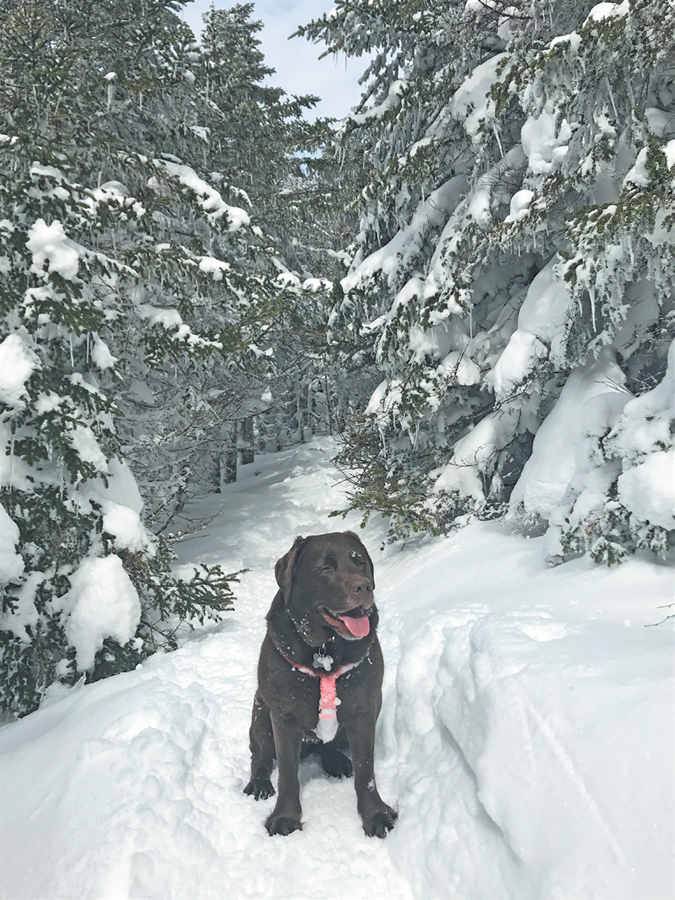Q. My 5-year-old chocolate Lab, Trixie, and I love to go hiking year round, but we run into a problem in winter. While I avoid walking on days that it falls below 20 degrees, I still always give her extra food before a hike (including pieces of chicken for a pre-hike protein boost), and we stop for “snack breaks” of kibble along the way. But, usually on the way back, she will start desperately begging for food, including standing in front of me on the trail and refusing to budge until I give her a handful of kibble. Sometimes we will only go a few steps before she starts this again. I don’t know if she is getting cold, or if she has burned up the extra food I gave her before the hike; we usually walk for 3 to 6 miles over the course of 4 to 7 hours, stopping often to admire scenery and take pictures. She doesn’t seem particularly tired, so I don’t think I’m overdoing it as far as exhausting her too much, nor does she seem cold in other ways. It’s just these desperate hunger cravings correlated with the colder days. Sometimes she ends up getting two to three times the amount of food she would normally receive, and I worry about giving her such large quantities because she invariably ends up with diarrhea if she gets too much. This only happens in winter, and I’d very much appreciate any information you could provide to help me better handle Trixie’s food/nutrition needs during our winter hikes.
Tiffany Grade
Sandwich, New Hampshire
Dear Ms. Grade,
A. If your pet is a sled dog entered into the Iditarod, then yes, she is going to need more calories in the winter. But for Trixie, who is active but not a super athlete or outdoor working dog, the amount of extra calories she’d need in the cold weather wouldn’t amount to much. In fact, a lot of dogs who live where the weather turns cold in winter actually gain weight during that season because they remain indoors and sedentary more of the time than in summer. That is, calorie needs are much more about activity level than the weather.
And while Trixie certainly needs more calories on days she’s very active, she likely does not need two to three times her normal amount of food on your long but leisurely walks! As long as she is not gaining or losing weight overall, then you’re getting her calorie allotment just right — or you can make small adjustments to keep her weight ideal, says the Head of the Tufts Obesity Clinic for Animals, Deborah Linder, DVM.
Hearing about her behavior, we suspect that Trixie is not hungry or cold but simply good at training you. “When we take walks during the winter, Mom keeps feeding me as much as I ask for — Yum!”
To be absolutely certain about Trixie’s calorie needs, you should talk to her veterinarian. Short of that, since you say the walks do not tire her and she does not seem cold, you might want to try just a bit of extra kibble at the beginning or end of a walk — or putting a little extra in her bowl before you head out. If she’s not actually hungry, she’ll soon get the hang of it that taking a step during the hike does not mean more treats.





